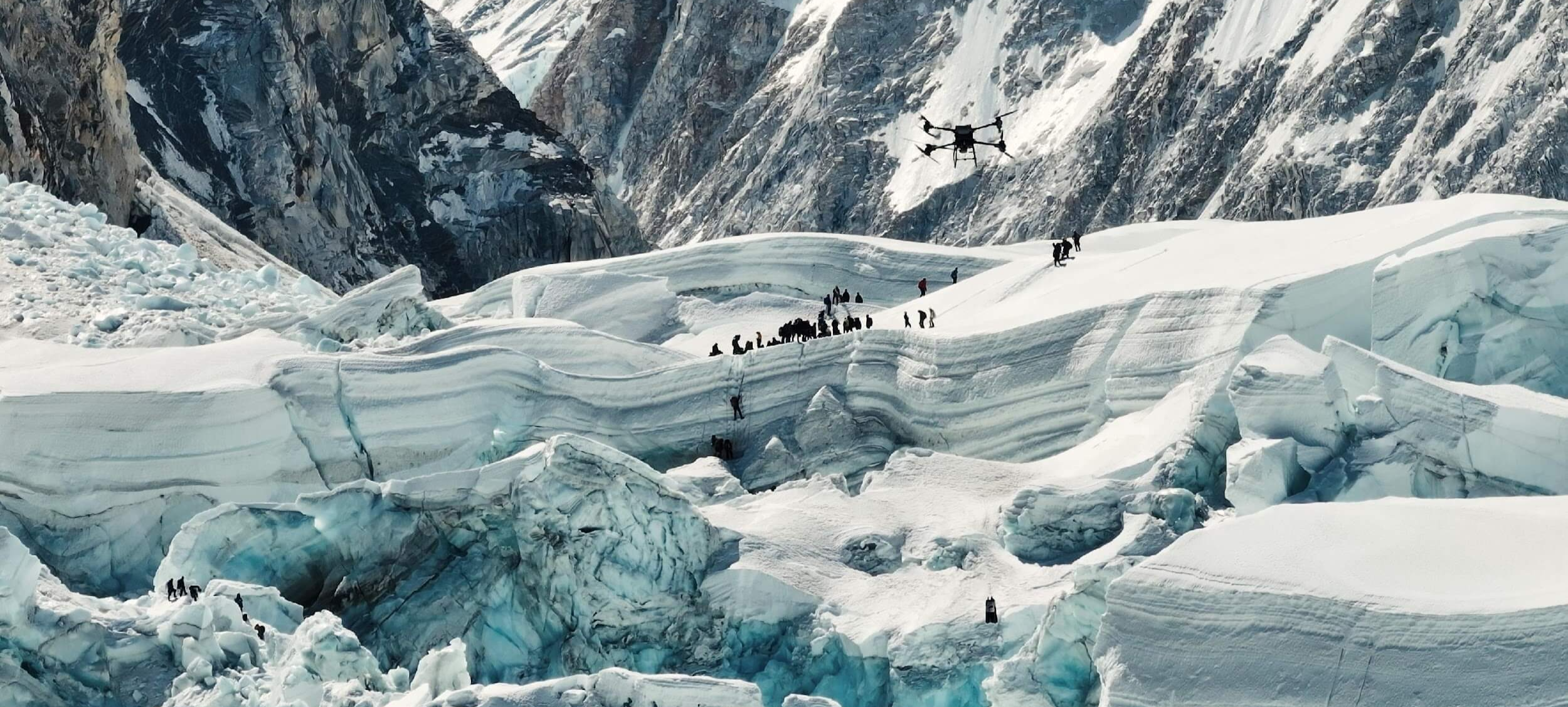DJI Drone Conquers Mount Everest With Delivery Tests, World's First

On June 5, DJI, the world’s leading manufacturer of civilian drones, announced that it had successfully completed a high-altitude transportation test with drones on the south slope of Mount Everest. This marks the first time a civilian drone has completed a round-trip on a route at altitudes between 5,300 meters and 6,000 meters, setting a new record for civilian drone transportation.
Between April 25 and May 1, 2024, DJI’s payload drone team conducted a week-long high-altitude flight and transportation capability test in the Mount Everest south base camp (5,300 meters above sea level) and above, verifying the drone’s adaptability to high-altitude flight, empty flight, and loaded flight.

The results demonstrated that the unmodified DJI FlyCart 30 can stably fly at around 6,000 meters in temperatures of -5°C and wind speeds of 15 meters per second (equivalent to a Force 7 gale) with a payload capacity of 15 kg. In the transportation mission carrying 15 kilograms over a route length of 2.7 kilometres and a climbing height of 700 meters, the FlyCart 30 had 43% battery power remaining after one round trip, and the power system still had over 20% power margin under extreme climbing conditions, demonstrating stable power system performance and further room for altitude improvement. This is also the first time a drone has been used for transportation under natural conditions at an altitude of 6,000 meters and in real mountaineering conditions.

It is worth noting that the FC30 was optimized for various extreme scenarios during the product design phase. In the recently concluded 40th Antarctic Expedition of China, the FC30 also passed the test of the harsh Antarctic climate and harsh environment on drone flight performance. It demonstrated stable flight capabilities and reliability, significantly improving the efficiency and flexibility of scientific research work. Before the measurement in the Mount Everest area, the extreme bottom line verification for an altitude of 6,000 meters was also carried out in Shigatse, Tibet.
In 2020, the Department of Commerce placed DJI on its Entity List. While it doesn’t completely ban DJI products, it restricts U.S.-based companies from exporting certain technologies to DJI without a license. This limits DJI’s access to potentially sensitive U.S. technology. ——AP News
https://www.youtube.com/watch?v=qwI-y_0qZi0&embeds_referring_euri=https%3A%2F%2Fchinaacademy.substack.com%2F&feature=emb_title




